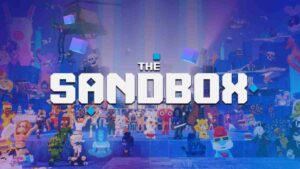MapleStory N isn’t trying to replicate the original MapleStory experience. Instead, it’s pushing into new territory, blending blockchain tech with autonomous AI characters that play the game for you. Nexon is experimenting with what it means to “own” and influence a character in a game you don’t directly control.
The idea isn’t just about decentralization. It’s about behavior. Players train bots, set parameters, and let them loose in a world where everything from movement to quests to economy is on-chain and independently verifiable. You’re not the avatar — you’re the architect.
Bots are the players, and you guide them
In MapleStory N, your role shifts from direct control to high-level strategy. You customize your bots, give them behavioral rules, and send them out into a fully autonomous RPG world. These bots explore, fight, collect items, and even evolve without micromanagement. You’re watching a system unfold, not mashing keys in real time.
This isn’t just about automation. Each bot has persistent traits, memory, and a learning model that adjusts its decisions over time. What you create ends up acting unpredictably — sometimes efficiently, sometimes not — but always within the constraints you’ve designed.
On-chain gameplay shapes every interaction
Everything happening in MapleStory N happens on-chain. Movement, combat, NPC interactions, inventory — it’s all logged in a fully transparent and immutable system. This adds friction, but also guarantees that no player has backend access or admin powers. What the game is, is what everyone sees.
It’s a different feel from traditional MMOs. You’re not competing based on twitch reflexes, but on how well you’ve trained your agents to navigate the world’s logic. The playing field is flat — success depends on strategy, not spend.
Tokenized ownership, but stripped of hype
Yes, there are NFTs and tokens here. But Nexon isn’t leading with that. The key point is that characters, items, and behaviors are persistent, composable, and transferable across smart contracts. What matters isn’t speculation, but modularity.
This architecture lets other devs create side content, spinoffs, or overlays without breaking the system. In theory, someone could build a minigame or UI layer that interacts with the same bots, and the core rules would still hold.
Built for a community of builders and systems thinkers
This isn’t a game for everyone — and that’s probably the point. MapleStory N seems aimed at a niche of players who enjoy automation, optimization, and watching emergent behavior unfold. Think Zachtronics fans, AI hobbyists, or even DeFi tinkerers, not traditional MapleStory fans.
And Nexon knows it. They’ve positioned the project as a playground for experimentation. The tools are open, the logic is inspectable, and the experience is more about tweaking systems than grinding quests.
Still early, but foundational ideas are forming
MapleStory N is more prototype than polished game right now. But it’s already showing how decentralized games can move beyond tokenomics and into actual design shifts. Autonomous agents, persistent logic, open infrastructure — these are the core ideas here.
It may never become a hit in the usual sense, but it doesn’t need to. Its value is in pushing the conversation forward, giving developers and players a new lens on what game interaction could look like when you aren’t the one holding the controls.
Web3 Analyst & Play Blockchain Games Guide
CryptoKit breaks down Web3 gaming like it’s second nature. From tokenomics to airdrop strategies, she turns blockchain chaos into clear, actionable advice for players who want to win more than XP.




